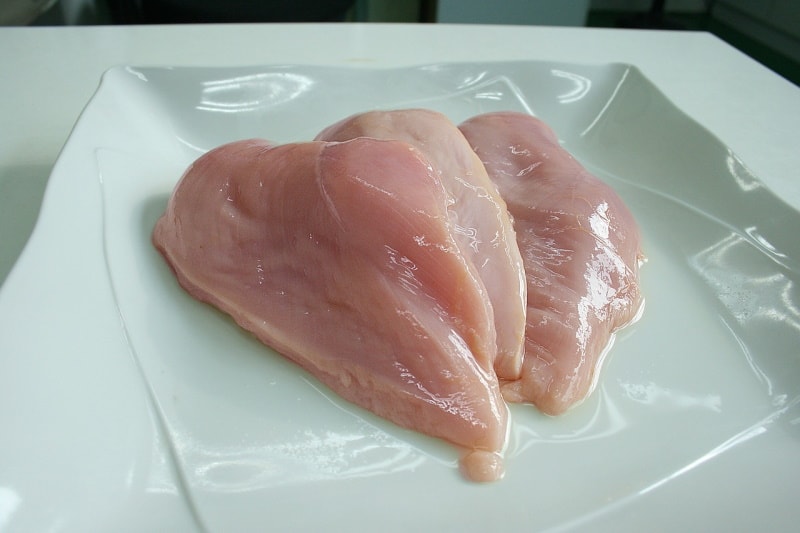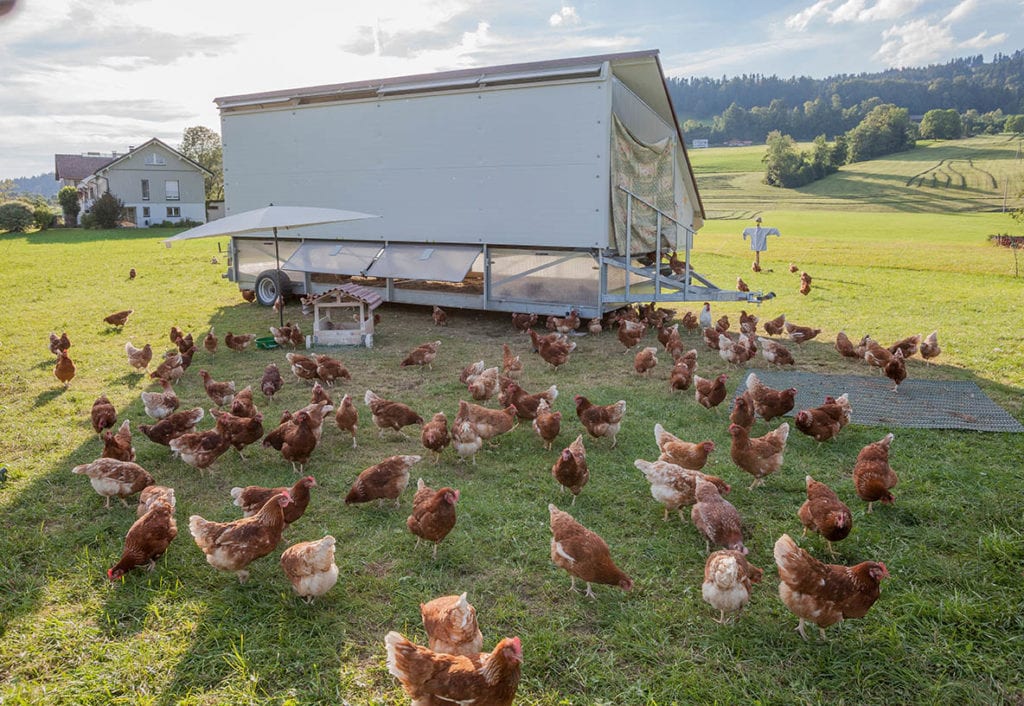How Much Water Is Used to Make a Pound of Chicken? (2025 Guide)
-
Jeff Weishaupt
- Last updated:

Have you considered how much water is used to make a pound of chicken? The World Wildlife Fund predicts that water used for livestock production may rise by 50% by 2025, a clear cause for concern.
Considering it takes 518 gallons of water to produce one pound of chicken, this food has one of the highest water footprints. Read more about the water footprint of chickens and how you can do your part to repair the damage.
What Is a Water Footprint?
Nearly all types of food require water for their production. The water footprint of food measures the amount of water used in its production. These measurements help us determine how our freshwater resources are used and consumed. Learning about the water footprint and how our consumption impacts it is crucial. It helps us understand how our daily choices affect the world’s water resources and what we can do to make a difference.
Roughly 2.7 billion people experience water scarcity for a month each year. It is essential to ensure that our freshwater is distributed evenly across countries, especially for the production of necessities in third-world countries.
How Much Water Is Used to Make a Pound of Chicken?

Chicken has a water footprint of 518 gallons of water per pound. This number may seem extremely high, but it’s surprisingly low compared to other types of meat.
For example, producing one pound of pork takes 718 gallons of water, while beef requires 1,799 gallons of water. It’s also worth noting that it takes 1,049 gallons of water to produce one pound of goat or sheep meat.
- Drinking water for the chicken
- Chicken house’s maintenance
- Water for feed growth
- Water for processing and packaging
Of course, the water footprint of chicken varies across different countries, considering each country has a different production system for its retail items. However, India and America seem to have the highest water footprints regarding chicken.
Surprisingly, eggs also have a much higher water footprint than most may think, requiring 53 gallons to produce a single egg. That is more than the entire bathtub’s worth of water required to produce just half of our breakfast.
Water Footprint Comparison of Crop and Animal Products
Here is a complete comparison of the liters of water used per kilogram in different crop and animal products.
| Meat Type | Liter per kilogram |
| Chicken meat | 4,325 |
| Pig meat | 5,988 |
| Sheep/goat meat | 8,763 |
| Bovine meat | 15,415 |
| Butter | 5,553 |
| Milk | 1,020 |
| Eggs | 3,265 |
| Oil crops | 2,364 |
| Sugar crops | 197 |
| Starchy roots | 387 |
| Vegetables | 322 |
| Fruits | 962 |
| Cereals | 1,644 |
| Nuts | 9,063 |
It’s a common misconception that nuts have the highest water footprint. The real culprit is meat. After a considerable difference, nuts follow up with a 9,063 liter/kg footprint. Meanwhile, sheep or goat meat takes up 8,763 liters per kilogram.
How Many Liters of Water Are Used to Produce Our Food?

Everything we eat has a water footprint, whether we like it or not. Unfortunately, some foods have a higher water footprint than most, such as beef, chicken, and most meats. Here’s how much water is used to produce the food we eat daily.
- One serving of soda is produced with 46 gallons of water.
- One pound of avocados is produced with 141 gallons of water.
- A gallon of brewed tea is produced with 108 gallons of water.
- A gallon of coffee is produced with 1,056 gallons of water.
- One serving of beer is produced with 28 gallons of water.
- One pound of broccoli is produced with 34 gallons of water.
- A loaf of bread is produced with 240 gallons of water.
- A pound of garlic is produced with 71 gallons of water.
- One serving of potato chips is produced with 12 gallons of water.
- One chocolate bar is produced with 450 gallons of water.
- A gallon of wine is produced with 872 gallons of water.
- One hamburger is produced with 53 gallons of water.
- One pound of pasta is produced with 222 gallons of water.
- A pound of hazelnuts is produced with 1,260 gallons of water.
How to Reduce the Water Footprint of Your Food
Since all foods require water for production, it’s impossible to minimize your personal water footprint significantly. However, if you’re still interested in reducing your water footprint and making a change, you may take specific measures to eat for a healthier planet.
Of course, the obvious first step is to avoid eating meat, as it has one of the highest water footprints out of all foods. Those with vegetarian diets consume 55% less water than those that eat beef and chicken. But quitting meat isn’t easy. Instead, you may reduce your meat servings and opt for more vegetarian options to reduce your water footprint.
While you’re still eating meat, you must find ways to eat better meat. Pasture-raised meat can reduce your water footprint better than industrially farmed-animals. It also helps to opt for organic food, as it has better water infiltration and retention and requires less irrigation.
Eating whole foods also eliminates the water footprint of cleaning machinery, pre-cooking ingredients, the production of fuel for delivery, etc. Other than that, you may be able to reduce your water footprint by eating locally.
- Related read: How Much Water is Used to Make a Pound of Pork?

Conclusion
Chicken has one of the highest water footprints of all foods, requiring 518 gallons of water to produce one pound. If you’re interested in lowering your personal water footprint, it may help to consider the tips mentioned above.
Of course, these measures cannot guarantee the complete elimination of water waste. But they can help us fulfill our personal responsibility of protecting our planet.
Featured Image Credit: kakyusei, Pixabay
Contents

